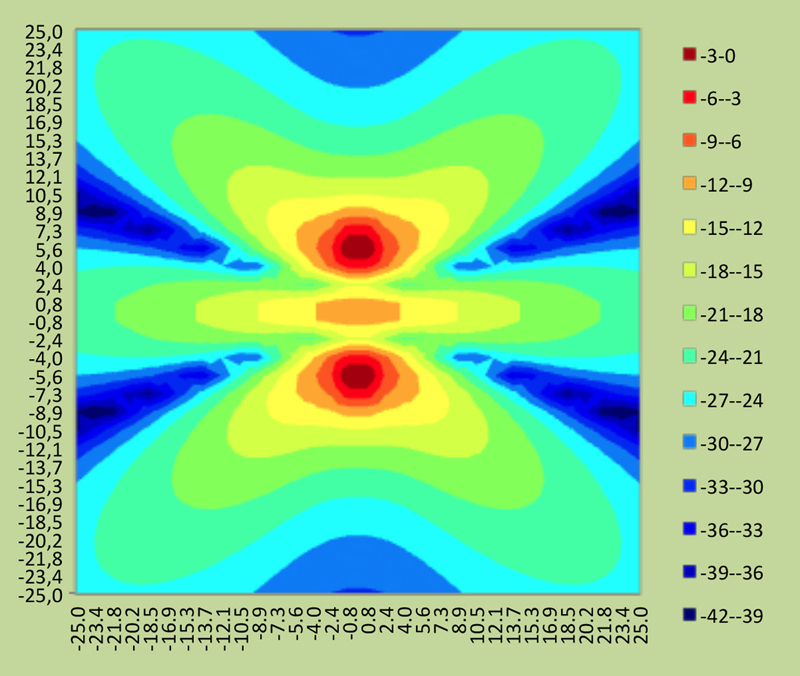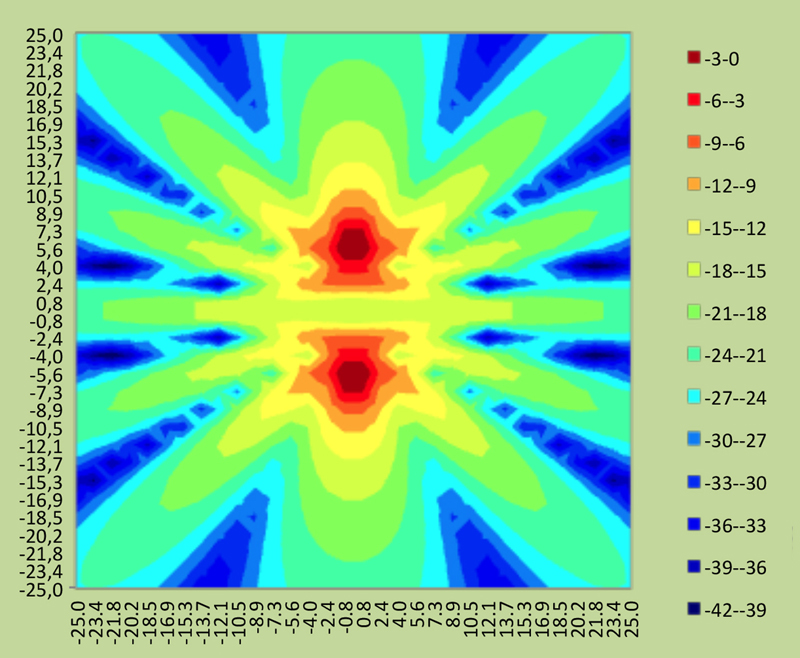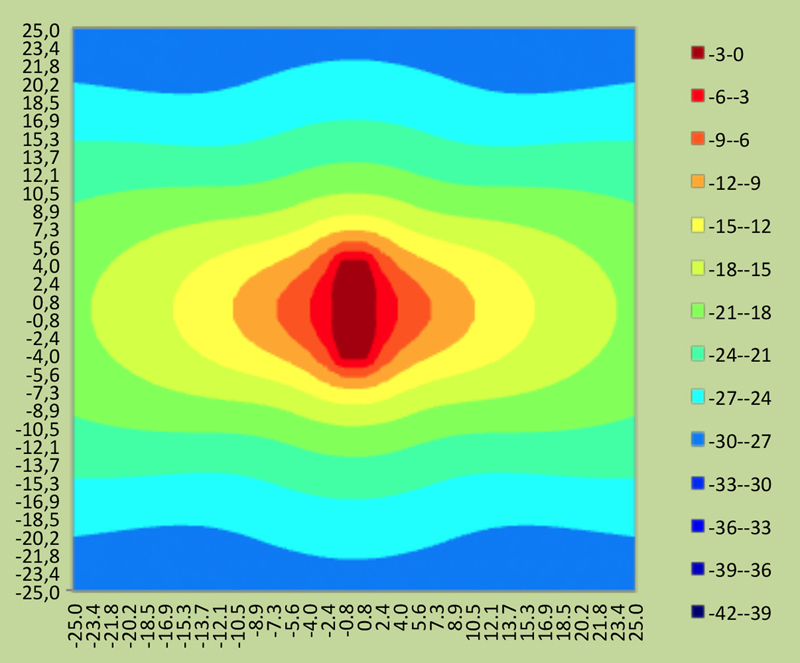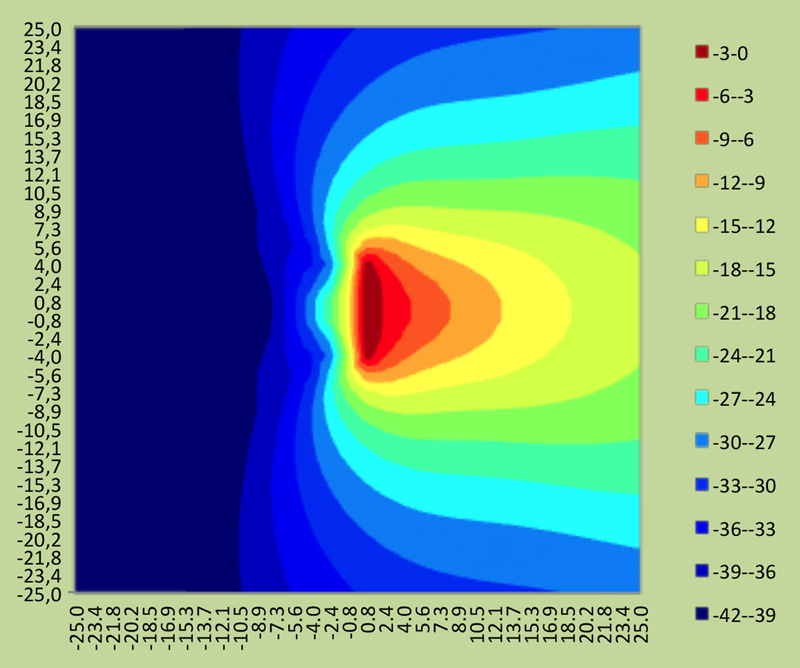
Interesting Arrangements
Let’s move on to a variety of ways to deploy subs. Prediction software can be very helpful in this regard, allowing us to model various configurations as well as see the impact of things such as signal delay and high-and low-pass filtering.
The plots we’re presenting here were done with the Subwoofer Array Designer Calculator (www.merlijnvanveen.nl) by the software designer himself, Merlijn van Veen. (Thanks Merlijn!)
Single. Placed in a convenient spot, output will only be affected by the room and not other subs. A corner location can be better as it affords a boost in output. A downside is lack of pattern control, with the possibility of too much LF energy on stage and/or in other areas.
Multiples. This will “move more air” than a single sub, but stacking or lining up the enclosures will effect the pattern because the group produces longer than a one-quarter wavelength, which in turn will narrow the coverage pattern. Placing them near a wall or corner will additionally alter the pattern.
Left/Right (Ground). In Figure 2 we see the result of an L/R placement at 40 Hz. The power alley is clearly in evidence, and also note that on each side of the power alley, there are power valleys or null zones where destructive interference has reduced the output level.
Compare this to Figure 3, which shows the same configuration at 80 Hz. Note the destructive interference has resulting in multiple null zones in the output.
Left/Right (Flown). Particularly popular at larger events, subs can fly above a loudspeaker array, as a part of a horizontal array, next to an array, and behind an array. The behind configuration minimizes the overall width of the loudspeaker hangs and doesn’t intrude on audience sightlines. Flown subs can be configured in directional arrays as well as be joined by additional subs on the ground.
Vertical Array. Subs stacked vertically (usually flown beside or behind an array) will develop some vertical pattern control, with the length of the array determining how much. Longer = greater control.
Center (Ground & Flown). A center location with one or more subs can be ideal for providing a smoother coverage pattern over an L/R placement, but this method may result in putting too much bass back onto the stage unless cardioid cabinets or configurations are implemented. Center flown subwoofer arrays are popular for installs, especially in theaters, but not so much for live events.
Horizontal. This arrangement places loudspeakers next to each other (or with small intervals between boxes) in a row, usually across the front of the stage.
The effect of using a large line of cabinets will narrow the horizontal pattern, but unless the array is made up of cardioid cabinets, the stage will still be awash in low frequencies.
Curving the array instead of placing the cabinets in a straight array can offer more constant directivity. Figure 4 shows a horizontal array at 40 Hz, while Figure 5 shows the same configuration using cardioid cabinets.
Distributed/Delay. Uses multiple subs in various locations (such as hidden beneath a runway stage along its length), and may employ time delay to achieve a coherent arrival time at various audience locations.
This approach is popular for corporate-type events where a large stack or wall of subs is not desired for aesthetic reasons, while a number of subs spaced apart down the walls, flown, or hidden under a stage is better received by event planners.
Distributed-type systems can also be found installed in venues where a single subwoofer placement would not cover the intended audience area.




